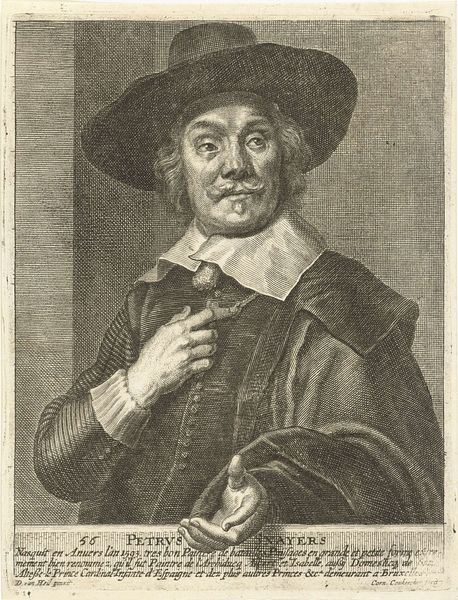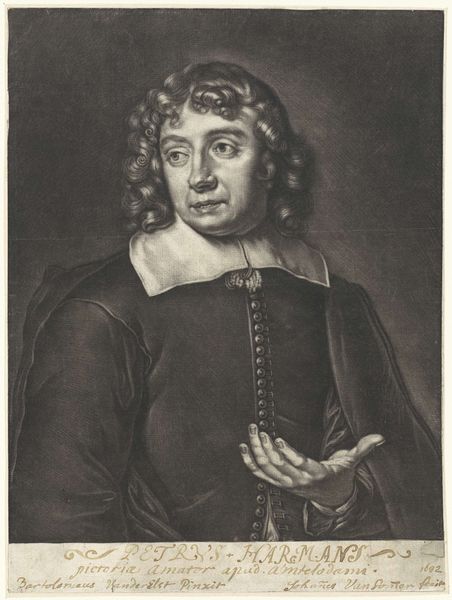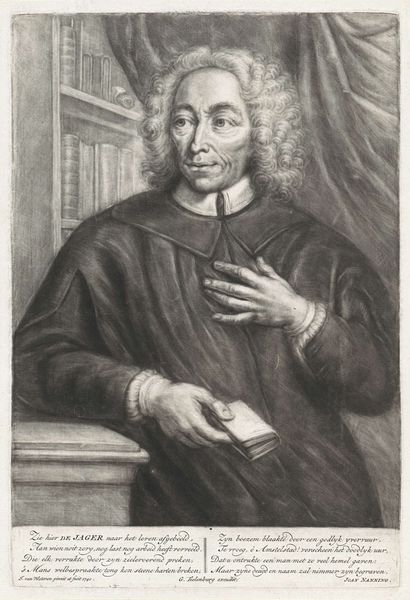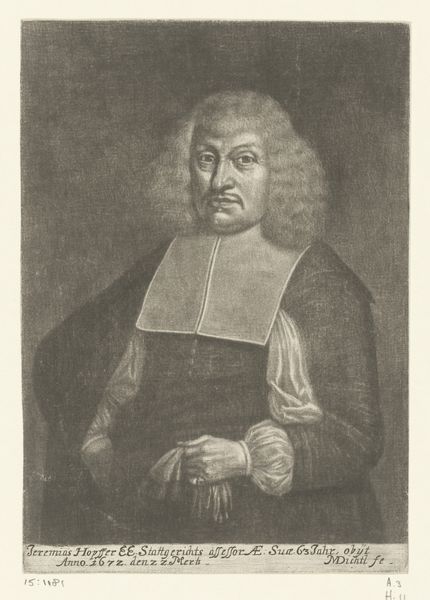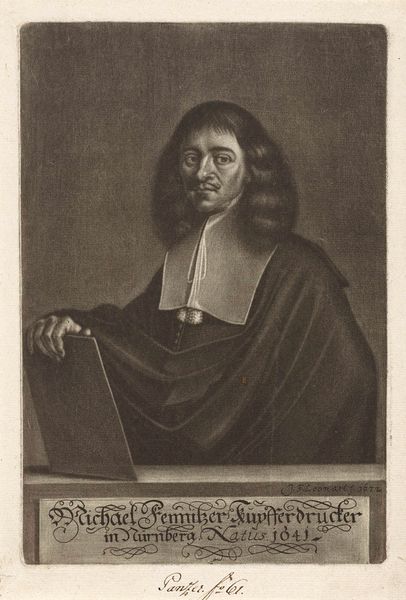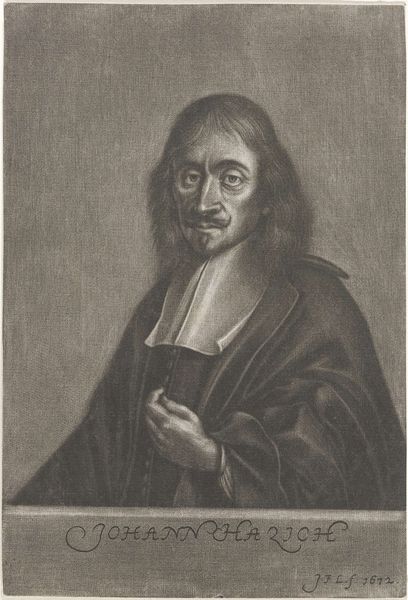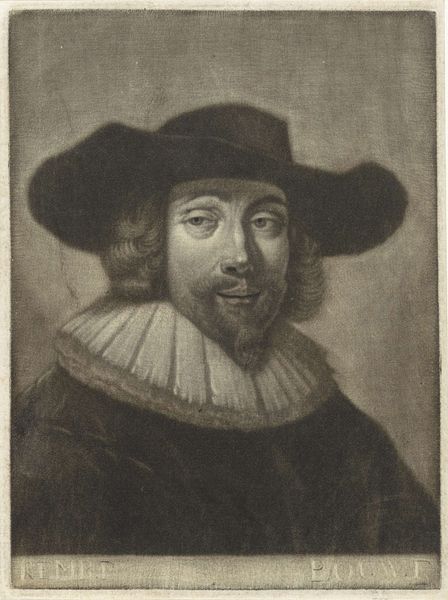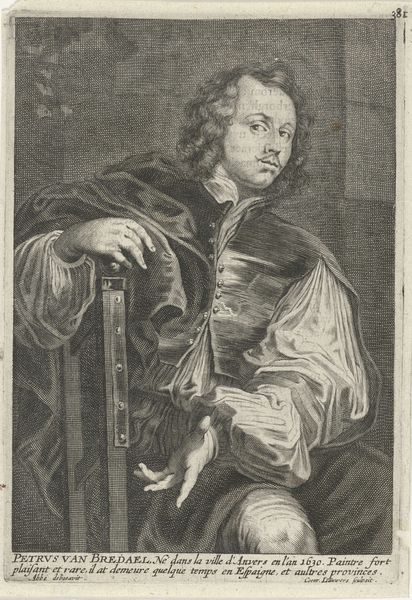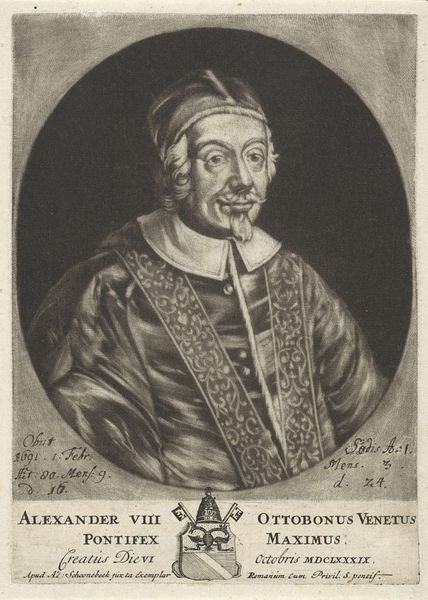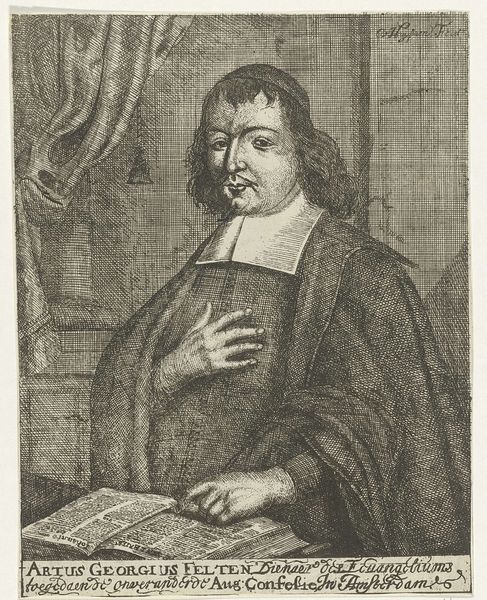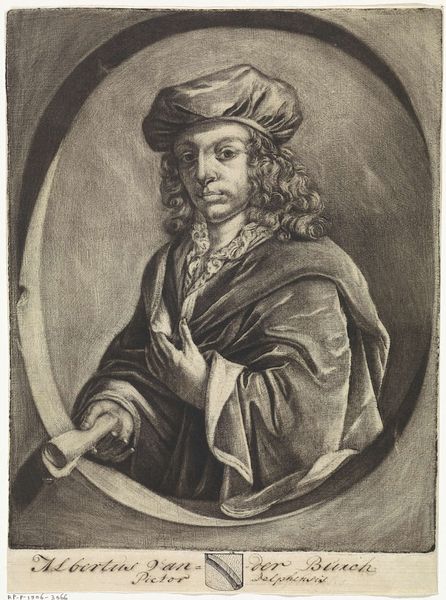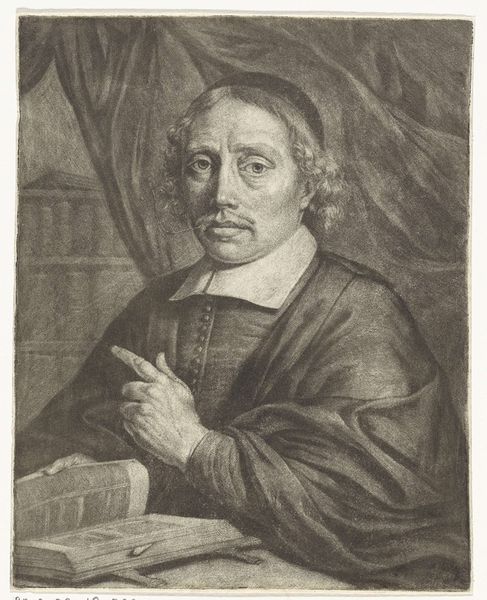
print, etching, engraving
#
portrait
#
baroque
# print
#
etching
#
engraving
Dimensions: height 180 mm, width 120 mm
Copyright: Rijks Museum: Open Domain
Curator: This etching from 1672 depicts Paul Kolb, a painter in Nuremberg. Johann Friedrich Leonard captured his likeness through engraving and etching techniques. The Baroque style is quite evident, wouldn’t you agree? Editor: Baroque, certainly. And my first thought is somber elegance. I’m drawn to the textures—look at how the engraver captured the sheen of his vest! It seems less about opulent display and more about careful, controlled presentation of self. The sitter's garments, despite their simple appearance, would signify something to the contemporary beholder. Curator: Absolutely, dress speaks volumes, it signals identity and profession! Look at the prominence given to his hand. Note how the elongated fingers draw the eye, maybe suggestive of the painter’s ability. The very tools that bring forth artistry from bare canvases, becoming visual cues of creation and transformation. It draws the viewer's eye not merely to representation, but also to production, skill and manual labor, of craft. Editor: I like that reading. For me, that deliberate emphasis speaks to the economic conditions of artistic production in Nuremberg at the time. By highlighting his physical agency, the engraver also indirectly emphasizes Kolb’s worth and status in the community through craft, skill, and reputation, wouldn't you say? It also makes me consider how prints democratized portraiture. Engravings like this would have allowed broader circulation and viewing of one's image. Curator: Yes, it points to accessibility. The Baroque sought grandeur, but also reach. Think of how the symbols are understood by a wide public. Through distribution it reinforces identity across social spheres, reminding viewers not only of individual importance, but collective belonging within a particular social hierarchy—an affirmation that Kolb's status matters, because art itself holds status in the era and social sphere that he exists. Editor: Right, the material object becomes intertwined with its function as social marker. The labour needed, the social sphere… All those aspects shape how we see Kolb and what it meant for Leonard to create it. It goes beyond mere image-making, delving into social construction through process. Curator: A conversation etched in time itself, reflecting status through process and signifiers. Editor: Indeed. A potent mix, really.
Comments
No comments
Be the first to comment and join the conversation on the ultimate creative platform.
